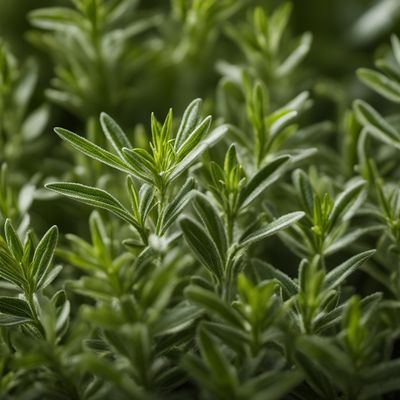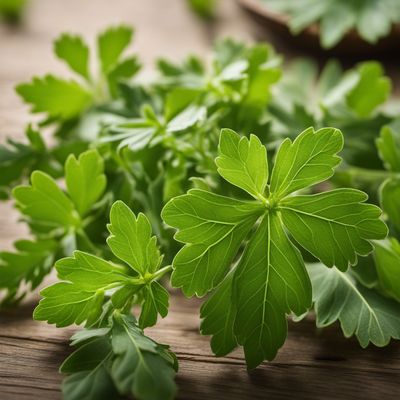
Ingredient
Hyssop, dry
The Aromatic Herb: Unveiling the Secrets of Dry Hyssop
Dry hyssop, derived from the flowering herb Hyssopus officinalis, is characterized by its slender, needle-like leaves and vibrant green color. It possesses a strong, aromatic scent reminiscent of mint and a slightly bitter taste. The texture of dry hyssop leaves is delicate and brittle, allowing them to crumble easily when crushed.
Origins and history
Hyssop has a rich history dating back to ancient times. It is believed to have originated in the Mediterranean region and was highly valued by the ancient Greeks and Romans for its medicinal properties. Hyssop has also been mentioned in religious texts, such as the Bible, where it symbolizes purification and cleansing.
Nutritional information
Dry hyssop is a good source of antioxidants and essential oils. It is low in calories and contains beneficial compounds such as rosmarinic acid, which has anti-inflammatory properties.
Allergens
There are no known allergens associated with dry hyssop.
How to select
When selecting dry hyssop, look for leaves that are vibrant green in color and free from any signs of discoloration or mold. Opt for a reputable brand or supplier to ensure the highest quality.
Storage recommendations
To maintain the freshness and flavor of dry hyssop, store it in an airtight container in a cool, dark place away from direct sunlight. Properly stored, it can retain its quality for up to a year.
How to produce
Dry hyssop can be grown in a home garden by planting seeds or purchasing young plants from a nursery. It thrives in well-drained soil and requires full sun exposure. Regular pruning will help promote healthy growth.
Preparation tips
Dry hyssop can be used in various culinary applications. It can be added to soups, stews, marinades, and sauces to enhance their flavor. It also pairs well with lamb, poultry, and fish dishes. To release its aromatic oils, crush the leaves gently before use. Remember to use dry hyssop sparingly, as its strong flavor can easily overpower other ingredients.
Substitutions
If dry hyssop is not available, you can substitute it with a combination of mint and thyme to achieve a similar flavor profile.
Culinary uses
Dry hyssop is commonly used in Mediterranean, Middle Eastern, and North African cuisines. It is a key ingredient in dishes like za'atar, a popular spice blend, and is often used to flavor herbal teas and liqueurs.
Availability
Dry hyssop is commonly available in most grocery stores, specialty spice shops, and online retailers.
More ingredients from this category » Browse all

Woodruff, dry
The Fragrant Herb: Unveiling the Secrets of Dry Woodruff

Borage, dry
The Vibrant Herb of Delight

Rosemary, dry
"The Fragrant Herb: Unveiling the Secrets of Dried Rosemary"

Fennel, dry
The Fragrant Spice of the Mediterranean

Thyme, dry
The Essence of Thyme: A Versatile Herb

Savory, dry
Umami Delight

Wintergreen leaves, dry
Nature's Minty Delight

Basil, dry
The Fragrant Herb: Dried Basil

Lovage, dry
The Aromatic Herb: Lovage

Tansy and related species, dry
The Golden Herb of Ancient Times

Sweet cicely, dry
The Delicate Herb: Sweet Cicely

Sage, dry
The Timeless Herb: Unveiling the Versatility of Dry Sage